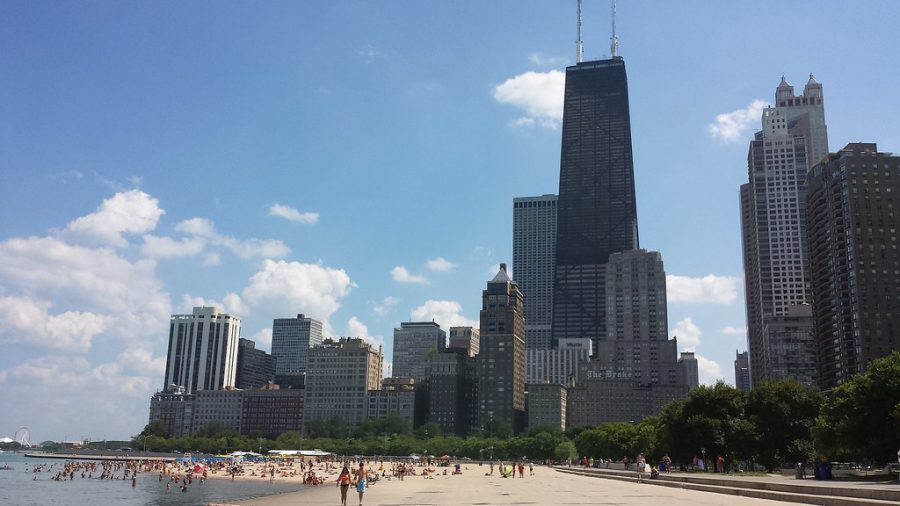A breakdown of Illinois Gov. J.B. Pritzker, Chicago Mayor Lori Lightfoot’s five-step plans to reopen economy
May 8, 2020
This week, Illinois Gov. J.B Pritzker and Mayor Lori Lightfoot announced their plans to reopen Illinois and Chicago, respectively. Both stated that the populations they represent advanced to the second phase of reopening the economy. According to Pritzker and Lightfoot, barring unforeseen setbacks, Illinois–and by extension, Chicago–is close to moving into the model’s third phase over the coming weeks.
Pritzker said the state’s reopening model, called “Restore Illinois” will follow a “region by region” rubric by monitoring the rate of infection.
“Restore Illinois is a public health plan to safely reintroduce the parts of our lives that have been put on hold in our fight against COVID-19,” Pritzker said. “This is also a data-driven plan that operates on a region-by-region basis, a recognition that reality on the ground looks different in different areas of our state.”
Illinois transitioned to phase two of Restore Illinois following Pritzker’s May 1 extension of the stay-at-home order, which allows some nonessential businesses to reopen. The earliest one of Illinois’ four regions can progress to stage three is May 29.
Here is a breakdown on the five-phase reopening plan:
Phase 1 — Rapid Spread:
The rate of infection is high among people tested for COVID-19 and the number of COVID-19 patients admitted to hospitals is rapidly increasing. All regions experienced the first phase. Regions refusing to abide by mitigation orders such as stay at home mandates or social distancing guidelines will return to the first phase should the region experience an increase in COVID-19 cases. During this phase, all essential businesses remain open.
Phase 2 — Flattening:
The rate of infection among patients in hospital beds and ICU beds is slowing, moving to a flat and downward trajectory. Nonessential retail stores provide curbside pickup and delivery. Residents can begin enjoying additional outdoor activities while following social distancing guidelines. Illinois residents are required to wear face coverings in areas where social distancing is not possible. All regions in Illinois experienced flattening since the stay-at-home mandate.
Phase 3 — Recovery:
The rate of infection among those tested, the number of patients admitted to the hospital and the number of patients that require ICU beds remain stable or begins to decline. Healthcare regions that meet criteria over the next few weeks will be able to move to phase three on May 29. Barbershops, salons and other retail businesses may reopen but must follow safety precautions. Ten people or less are allowed at social gatherings. Illinoisans must continue to practice social distancing and wear masks.
Lightfoot’s plan begins to deviate from Pritzker’s at stage three, if only slightly. Chicago’s reopening model maintains that Chicago residents avoid vulnerable populations at stage three. Lightfoot also asks Chicago residents to seek testing if they suspect they have contracted COVID-19
Phase 4 — Revitalization:
The rate of infection among those tested and the number of patients admitted to the hospital continues to decline. A region experiencing a sustained decline in COVID-19 cases and hospitalizations can move to phase four. All gatherings of up to 50 people are allowed in public areas. Restaurants and bars reopen. Travel continues. Child care and schools reopen under guidance from the Illinois Department of Public Health (IDPH). Wearing a mask and social distancing is still required.
In Chicago, restrictions of capacity will be lifted, though safeguards will remain in place. Vulnerable populations are still encouraged to avoid nonessential contact.
Phase 5 — Restoration:
Upon the introduction of a vaccine or a highly-effective treatment, each region will reopen with safety precautions intact. All regions must eliminate new COVID-19 cases over a sustained period. All large events such as concerts are authorized to take place. Educational institutions and all places of employment will reopen. New safety protocols will be announced once the economy reopens.
Lightfoot specified that non-vulnerable individuals can resume working, though vulnerable populations are absolved from reentering the workforce if conditions are deemed unsafe. Chicago residents can also sign up for a vaccine on the COVID Coach web portal
Read more by the Independent:
Two white men accused of killing Ahmaud Arbery won’t be charged with hate crime. Here’s why.

Kris Solomita • May 8, 2020 at 11:54 pm
Is it too early to tell if Chicago will be opened for tourists by late July?